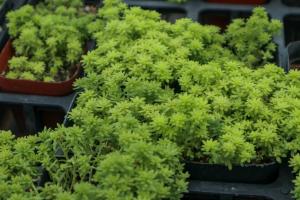What Plant Organ is Responsible for Water and Mineral Absorption?
As we know, plants are autotrophic organisms, meaning that they can produce their own food through photosynthesis. To be able to carry out photosynthesis, plants need a variety of nutrients, including water and minerals. But which plant organ is responsible for water and mineral absorption?
The Root System
In most plants, the root system is responsible for water and mineral absorption. The roots are specialized structures that grow into the soil and absorb water and minerals through their root hairs, which are microscopic projections on the surface of the root. The root system can be divided into two main types: taproots and fibrous roots.
Taproots are thick, fleshy roots that grow down vertically and can penetrate deep into the soil. They are typical of dicotyledonous plants, such as carrots, beets, and radishes. Fibrous roots, on the other hand, are many thin roots that spread out horizontally from the base of the stem. They are typical of monocotyledonous plants, such as grasses, lilies, and orchids.
The Role of Root Hairs
Root hairs are microscopic projections that grow out of the epidermal cells of the root. They are very important for water and mineral absorption because they greatly increase the root's surface area. This means that there are more places for water and minerals to be absorbed. In fact, root hairs can increase the surface area of the root by as much as 600 times!
Root hairs are also highly specialized cells. They have a thin cell wall, which allows for efficient exchange of water and minerals with the soil. They also have numerous mitochondria, which produce the energy needed to transport the water and minerals into the root.
The Role of Mycorrhizae
In addition to their own root hairs, many plants rely on symbiotic relationships with fungi called mycorrhizae to absorb water and minerals. Mycorrhizae are specialized fungi that form a mutualistic association with the roots of plants. The fungi attach to the surface of the root and extend their hyphae (thread-like structures) into the soil. The hyphae greatly increase the surface area available for water and mineral absorption, and they can even penetrate into the hard-to-reach pores and cracks in the soil.
But the relationship between the plant and the mycorrhizae is not one-sided. The fungi receive sugars and other organic compounds from the plant in exchange for their services. This mutually beneficial relationship is an example of symbiosis, a common strategy used by many organisms to increase their chances of survival.
The Importance of Water and Mineral Absorption
Water and mineral absorption is essential for the survival of plants. Without water, photosynthesis cannot occur, and the plant cannot produce the energy it needs to grow and survive. Minerals, such as nitrogen, phosphorus, and potassium, are also necessary for plant growth and health. They are used to build proteins, nucleic acids, and other essential molecules.
However, the availability of water and minerals can vary greatly depending on the soil and environmental conditions. Plants must have efficient mechanisms for absorbing these nutrients in order to grow and thrive. The root system, with its specialized root hairs and mycorrhizae, is an incredibly important adaptation that allows plants to survive in a wide range of environments.
Conclusion
In summary, the root system is responsible for water and mineral absorption in most plants. The specialized root hairs and mycorrhizae greatly increase the surface area available for absorption and allow plants to survive in a wide range of environments. Without these adaptations, plants would not be able to carry out photosynthesis or produce the essential molecules needed for growth and survival.

 how many times do yo...
how many times do yo... how many planted tre...
how many planted tre... how many pine trees ...
how many pine trees ... how many pecan trees...
how many pecan trees... how many plants comp...
how many plants comp... how many plants can ...
how many plants can ... how many plants and ...
how many plants and ... how many pepper plan...
how many pepper plan...































